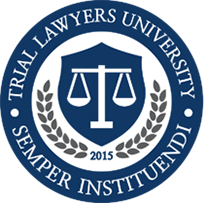In a case involving an infant who suffered an Erb’s palsy during delivery, attorneys from our firm were able to secure a settlement of $1.5 million on behalf of the young child’s parents. The case ultimately came down to the inexperience and failure on the part of the doctor, who failed to adequately treat shoulder dystocia, resulting in head trauma to the child.
Shoulder dystocia is an obstetric emergency during delivery whereby the infant’s shoulder is wedged at some point in the birth canal, trapping the child in mid-delivery. Shoulder dystocia is often demonstrated by the “turtle sign,” when the child’s head crowns but the struggle of the shoulder draws the child back into the canal. Shoulder dystocia is to be treated with swiftness and care as compression of the umbilical cord can lead to infant demise.
Procedures for managing shoulder dystocia involve several different methods of modifying the position of the infant so that the shoulder is freed, allowing delivery to continue. Maneuvers for treated this dystocia are numerous and include the Woods’ screw maneuver, which adjusts the position of the child through the application of pressure. There is a methodical process of managing dystocia those doctors and nurses are trained to adhere to.
In this specific case, the doctor was young and inexperienced in dealing with shoulder dystocia. However, the training and education undergone by doctors, including the defendant, is enough to enable them to respond to such a situation. Therefore, the inadequacy of the young doctor was not a defense against his negligence and inability to treat the condition without injuring the child because his position made him reasonably expected to do so.
Instead of performing the proper maneuvers to reposition the child, the doctor applied excessive force to the infant’s head, trying to force it out, injuring the brachial plexus nerve center and resulting in Erb’s palsy. While Erb’s palsy can be treated and fully recovered from, it often requires specialist intervention. The damage affects the infant’s spinal cord, which in turn impacts the mobility development. Recovery is not without its costs. Treatment can involve nerve transplants, tendon transplants, and surgery. While these procedures are already expensive, costs are weighted when the treatment is given to a child requiring special attention.
The settlement provided the parents with the means to provide their child with adequate treatment without having to factor in costs in the decision. Because their child’s condition was the result of malpractice, it was the doctor’s responsibility to make up for his mistake.











